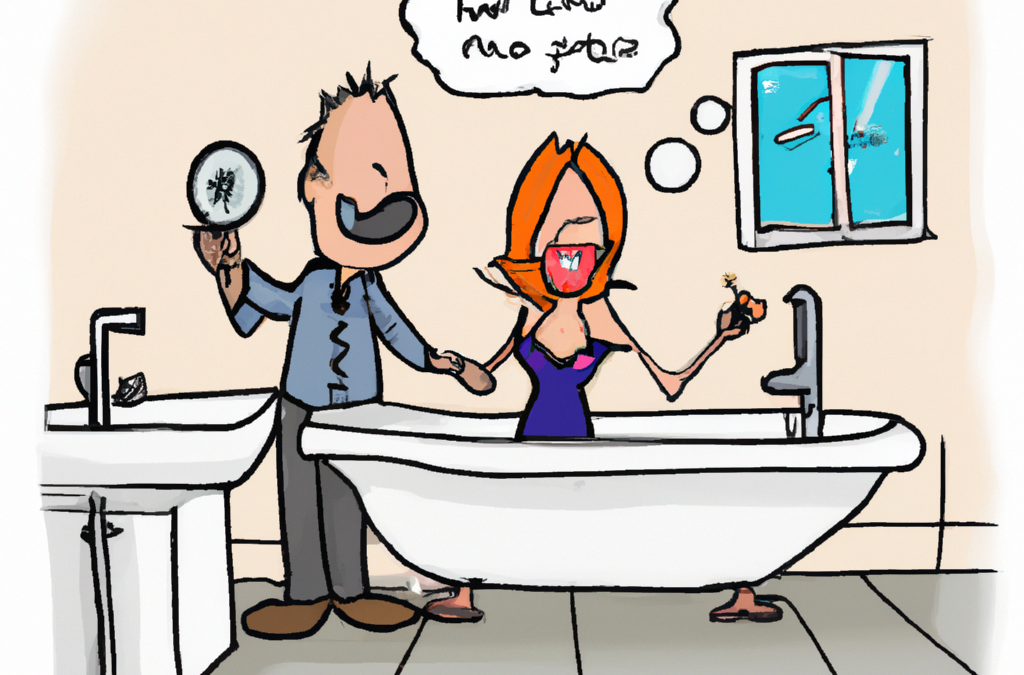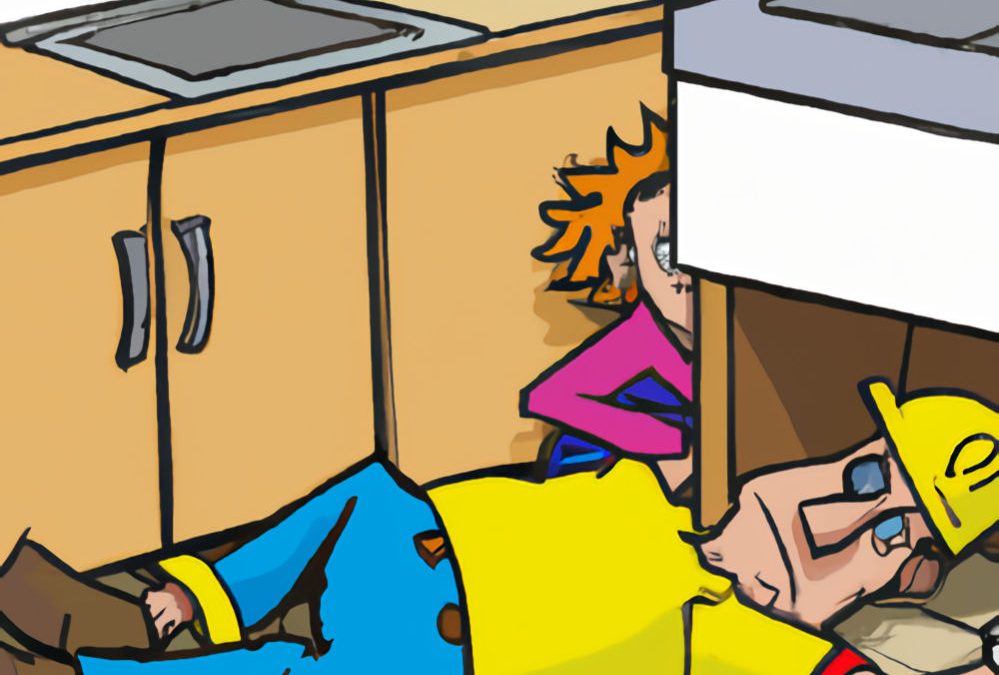
Plumbing Service Solutions: No X-Ray Vision, Just Experience
The Hidden World of Plumbing Service: An Expedition Below the Surface
Welcome to the enchanting and slightly mysterious world of plumbing service. It’s a realm where pipes, like teenagers, are heard but not often seen and where a plumber’s job sometimes feels like playing detective without the cool diagnostic tools.
When it comes to the twists and turns of plumbing, the average homeowner might feel like they’re trying to solve a mystery without a clue. Or a map. Or a flashlight.
But here at Whywait Plumbing, we fancy ourselves the Sherlock Holmes of the pipe world—minus the deerstalker hat, but definitely equipped with a magnifying glass in hand (and sometimes a plunger)
Plumbing: More Invisible than Your Average Superhero
First off, let’s address the elephant in the room – or rather, the elephant not in the room because about 90% of your plumbing is as hidden as a ninja in a blackout. It’s tucked away under your floors, behind walls, nestled in ceilings.
This isn’t an accident. It’s by design. After all, who wants to see what carries the water to your morning shower or the results of your last trip to the toilet?
You might think your house is just floors, walls, and ceilings, but it’s a complex labyrinth of pipes and fittings, quietly doing their important work out of sight.
Let’s bust a myth: Plumbers don’t have X-ray vision (although we’re still hoping it’s in next year’s budget). We can’t just gaze at a wall and see the hidden network of pipes like some kind of plumbing Superman.
No, we rely on skills, experience, and a good old-fashioned process of elimination.
The Sherlock Holmes of Pipes
Diagnosing a plumbing service problem is a lot like being a detective, except the clues are fewer ‘footprints at the scene of the crime’ and more ‘why is there water gushing from under the sink?
We start with the obvious signs – that puddle of water, the tap that’s turned into a miniature fountain – and work our way back. It’s a thrilling, edge-of-your-seat adventure, at least for us plumbing nerds.
Let’s consider a classic case: The Mystery of the Phantom Puddle. You wake up one morning and find a puddle of water in the middle of the bathroom floor. No, it’s not a ghastly visitation; it’s something far scarier—a plumbing leak.
Now, the untrained eye might just mop it up and hope for the best. But that puddle is a clue, my dear Watsons. It’s the first piece of the puzzle in a game of watery whodunnit.
Investigation: The Name of the Game
Investigating plumbing service issues is often a process of ruling out what it’s not. Think of it as a game of ‘Guess Who?’ but with pipes. Is it a leak? No. Is it a clog? Yes! Is it in the sink? No. Is it in the shower? Bingo!
This might sound time-consuming, and you’re not wrong. But remember, it’s better to play the long game than to rush in, hammer blazing, and hope for the best.
Plus, the alternative might involve tearing down walls and floors on a hunch, and we suspect that wouldn’t go down well with most homeowners.
The Process of Elimination
Finding the source of a plumbing problem is like peeling an onion—there are layers to this story, and yes, sometimes tears are involved.
The process of elimination begins. Is it the toilet? The sink? The soul-shattering thought that it could be the sewer. We check each suspect, tapping into our extensive knowledge of plumbing anatomy and the telltale signs of trouble.
No X-Ray Vision, Just Experience
It’s a common misconception that plumbers can waltz in and immediately point to the wall and say, “Ah, yes, the leak is precisely 3.5 meters in, just below the second floorboard to the left.”
If only! Despite not having superhuman abilities, we have years of experience, finely tuned senses, state-of-the-art tools, and a touch of plumber’s intuition.
The Underground Scene
A significant portion of plumbing service problems are underground, which is both cool and incredibly inconvenient. It’s like the pipes decided to form an exclusive club where no one’s allowed to see what’s going on.
When we’re dealing with underground issues, we’re working blind. Well, not literally blind – we haven’t resorted to echolocation just yet – but it’s a bit of a guessing game.
Enter the world of high-tech gadgets. We’ve got cameras on flexible rods, listening devices (not the spy kind, unfortunately), and other nifty tools to help us snoop around your pipes without turning your backyard into a replica of the moon’s surface.
In the Walls and Ceilings: Where No Plumber Has Gone Before
Now, onto the stuff in your walls and ceilings. This is like the final frontier of plumbing – it’s a whole new world up there (or in there, technically).
The tricky part? We can’t just take a peek. We have to rely on signs and symptoms, much like a doctor. ‘So, Mr. Pipe, where does it hurt?’
The Not-So-Glamorous Side of Plumbing Service
Let’s be real – plumbing isn’t always glamorous. It’s not all shiny black matte Taqua mixer taps and perfect water pressure.
It’s messy, it’s puzzling, and sometimes, it’s just downright baffling. But that’s where we, your trusty plumbing sleuths, come in.
The Whywait Approach: No Capes, Just Capabilities
At Whywait Plumbing, we don’t wear capes (they’d get caught on things), but we do bring a truckload of experience and a kit full of tools that would make Batman jealous. We approach each problem methodically, using our know-how to track down the issue, even if it’s playing the world’s best hide-and-seek game.
We’ve got gadgets and gizmos aplenty. We’ve got whozits and whatzits galore (you want thingamabobs? We’ve got twenty!).
But seriously, our tools are a bit more sophisticated than a mermaid’s trove. They listen to the walls (acoustic detectors), go down the drains with cameras (it’s not a reality show, but it’s just as revealing), and use all sorts of diagnostics to see the unseen.
The Deduction
Once we’ve listened, looked, and felt (yes, sometimes it’s about a keen touch), we start piecing together the evidence. Aha! The toilet’s flush is weaker on Tuesdays! The sink gurgles when the dishwasher is on! It’s not just happenstance; it’s a pattern, a lead to the culprit.
With a little bit of know-how and a lot of investigation, the problem comes to light.
Perhaps it was a sneaky leak in the shower fitting or a sly drip from a cracked pipe.
Whatever it is, once it’s found, it’s only a matter of time before we have it sorted. The relief is palpable, like the end of a whodunnit when the detective gathers everyone in the drawing room for the big reveal.
Understanding: The Key to Plumbing Peace
Understanding that plumbing is often a hidden and complex system can be your first step to peace of mind.
When you call us with a problem, we don’t expect you to know whether it’s a clogged trap or a broken sewer line. That’s our job. Your job is to sit back, maybe make a cup of tea, and let us do our detective work.
Prevention: The Game is Afoot
Let’s not forget the prequel to these plumbing thrillers—prevention.
Regular check-ups and maintenance are like the detective patrolling the streets, keeping the criminal elements at bay. They can catch the would-be leaks and clogs before they turn into full-blown capers.
Wrapping Up the Case
Ultimately, the world of plumbing is a complex labyrinth of pipes and fixtures that require a deft hand and a sharp mind to navigate. At Whywait Plumbing, we’re not just technicians; we’re guardians of the flow, defenders of the dry, and detectives of the drip.
So, the next time you find yourself with a plumbing problem, remember: it’s an adventure, a mystery, a puzzle waiting to be solved. And while we can’t promise it’ll be solved with the speed of a superhero (we’re working on our teleportation device), we can promise that we’ll crack the case with skill, a bit of humour, and maybe even a little bit of that Sherlock Holmes flair.
And, as always, if you find yourself knee-deep in a plumbing conundrum, don’t hesitate to call Whywait Plumbing. We’re on the case, ready to tackle those hidden pipe puzzles, one quirky investigation at a time. Because in the world of plumbing, the only thing better than a solved problem is a good laugh along the way.










